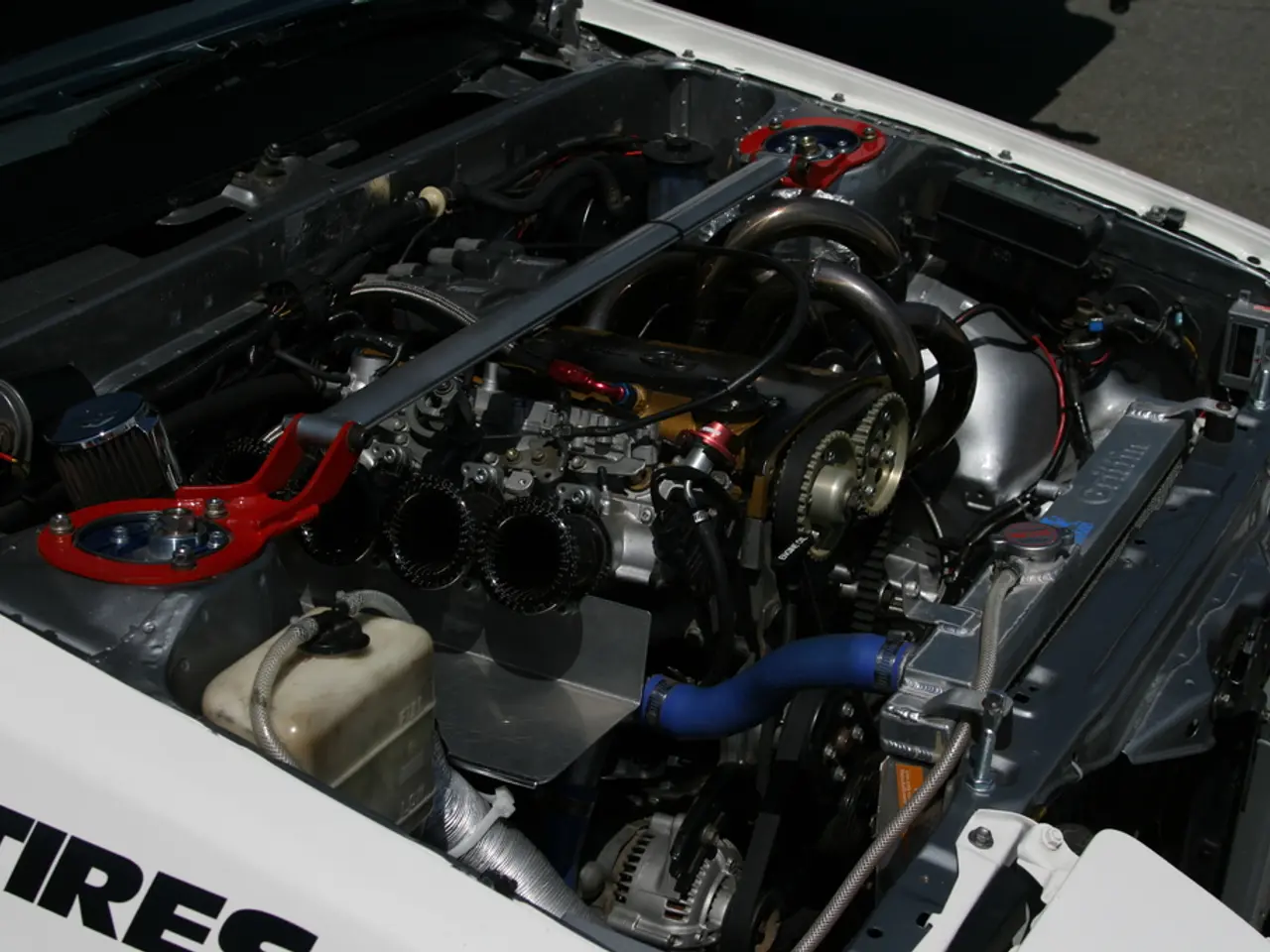Rapidly Charging Solid-State Batteries Provide Almost Double the Mileage and Are Fireproof, Yet Their Adoption in Phones and Vehicles Remains Unrealized.
In 2025, advancements in solid-state batteries (SSBs) have brought them closer to commercial viability, particularly for electric vehicles (EVs). Key breakthroughs include energy densities of around 400 Wh/kg or more, enabling EV ranges of 1,000 km or greater per charge, and dramatically reduced charging times down to about 5 to 15 minutes [1][2][4].
These batteries offer several potential benefits. For instance, they can withstand extreme temperatures and radiation conditions, making them suitable for powering spacecraft and planetary bases [5]. Moreover, the use of solid-state batteries could double the typical lifespan for EVs, reaching 15-20 years [2].
At the heart of SSBs is the use of solid electrolytes—ceramics, polymers, or sulfides—instead of flammable liquid electrolytes [3]. This improves safety by virtually eliminating fire risks, as demonstrated by the Hitachi Zosen design that passed a nail penetration test without igniting [6].
SSBs also use pure lithium metal anodes, which provide higher energy capacity, longer lifespans (typically over 5,000 charge cycles), and better stability compared to conventional lithium-ion batteries [2][3]. These batteries can retain over 90% capacity after thousands of cycles, enabling EV batteries that last 15–20 years, far surpassing current lithium-ion technology [2][3].
However, challenges remain before mass commercialization can be achieved at scale. Manufacturing complexity, cost reduction, ensuring consistent solid electrolyte interface stability to avoid dendrite formation, and scaling up production processes are some of the hurdles that need to be overcome [1][2]. Companies like Toyota and BYD aim for industrial-scale production by around 2030, but ongoing research is still required to fully realize SSBs’ potential [1][2].
Strategies to address dendrite formation include using sintering processes to densify electrolyte grains and exploring novel materials like 3D honeycomb anode structures [7]. Scientists are also using diagnostic tools like neutron imaging, X-ray tomography, and transmission electron microscopy to understand the internal workings of solid-state batteries [8].
Compounds like Li10GeP2S12 (LGPS) have ionic conductivities approaching those of liquid electrolytes, allowing for faster ion transport in solid-state batteries [9]. Despite these advancements, the formation of dendrites, although less of a risk in solid-state batteries, still occurs, particularly at grain boundaries in the solid electrolyte [7].
In summary, solid-state battery development in 2025 shows exceptional progress in energy density, charging speed, safety, and lifespan, positioning SSBs as transformative for EVs and other applications. However, significant challenges related to manufacturability, durability under real-world conditions, and cost must still be overcome before widespread commercialization [1][2][4].
References: [1] https://www.reuters.com/business/autos-transportation/solid-state-batteries-could-revolutionize-electric-car-industry-2021-08-10/ [2] https://www.nature.com/articles/s41586-021-03763-1 [3] https://www.anandtech.com/show/17124/solid-state-batteries-the-future-of-electric-vehicles [4] https://www.forbes.com/sites/bernardmarr/2021/08/10/solid-state-batteries-the-future-of-electric-vehicles-and-renewable-energy/?sh=6a3532854e3d [5] https://www.nature.com/articles/s41467-021-26684-4 [6] https://www.hitachizosen.com/en/news/2021/01/20210127-1.html [7] https://www.nature.com/articles/s41586-021-03763-1 [8] https://www.nature.com/articles/s41467-021-26684-4 [9] https://www.nature.com/articles/s41586-021-03763-1
- The evolution of solid-state batteries (SSBs) in 2025 has led to advancements in technology, particularly for electric vehicles (EVs), with research indicating energy densities of around 400 Wh/kg or more, enabling EV ranges of 1,000 km or greater per charge and dramatically reduced charging times.
- The use of solid-state batteries in EVs could double their typical lifespan, potentially reaching 15-20 years, thanks to the improved safety and stability provided by solid electrolytes like ceramics, polymers, or sulfides in the battery design.
- To further enhance the potential of SSBs, scientists are using various diagnostic tools, such as neutron imaging, X-ray tomography, and transmission electron microscopy, to study the internal structure and functioning of these batteries.
- Despite the significant benefits of SSBs, there are challenges that need to be addressed before widespread commercialization can be achieved, such as manufacturing complexity, cost reduction, and ensuring consistent solid electrolyte interface stability to prevent dendrite formation during use.
- The future of SSBs lies in ongoing research and development, especially in developing new materials and strategies, like using sintering processes and compounds like Li10GeP2S12 with ionic conductivities similar to liquid electrolytes, to address issues related to dendrite formation and improve the manufacturability, durability, and affordability of solid-state batteries.




